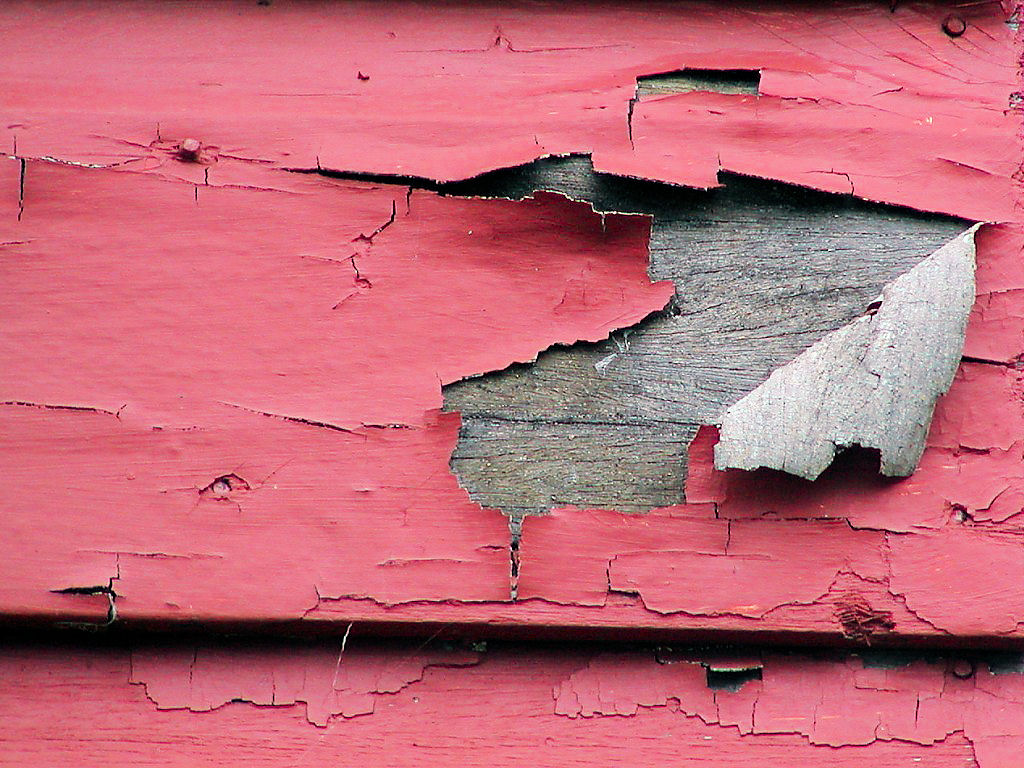What is the cold weather doing to your paint?
 Winter’s frigid cold weather may be literally peeling the paint off your house. And unless you have specialty paint and a warm spell in the forecast, you don’t want to start replacing the paint until at least spring. You also want to be careful where you are storing the extra touchup paint.
Winter’s frigid cold weather may be literally peeling the paint off your house. And unless you have specialty paint and a warm spell in the forecast, you don’t want to start replacing the paint until at least spring. You also want to be careful where you are storing the extra touchup paint.
What Winter is Doing to Your Paint
Interior condensation and exterior ice are major causes of peeling paint in the winter, according to U.S. Department of Agriculture and Purdue Cooperative Extension research.
As snow melts off a roof, ice may build up in dams at the roof overhang, which is typically more poorly insulated than the main part of the roof. As this built-up ice melts, it can seep into the eaves and down the walls, causing paint to peel.
Meanwhile, the USDA estimates that a family of four can generate three gallons of water vapor a day through bathing, washing clothes, cooking and simply breathing. With less ventilation in winter, the water vapor gets trapped in the walls and attic of a house without proper vapor barriers. It then condenses, soaks into the siding and causes the paint to blister and peel, particularly around bathrooms, kitchens and laundry rooms.
Steve Revnew, vice president of product development for Sherwin-Williams, warns of paint damage if snowmelt and other water leaks into joints with either damaged or missing caulk. He cautions that low temperatures also mess with paint tones, “In cold weather, dark colors can turn white or frosted looking.”
Aimee Desrosiers, director of marketing for Behr paints, adds that houses are not the only place to worry about paint in winter: “Paint problems that occur on the exterior of a home due to winter weather conditions may also occur on other surfaces. This is especially true on horizontal surfaces (such as patios) that may accumulate snow, leaves and water.”
How to Avoid Winter Paint Problems
Most of these cold-weather paint problems can be avoided with proper insulation, ventilation and moisture barriers. The USDA recommends at least one square foot of venting in gable roofs for every 300 square feet of ceiling area. To reduce condensation on paint, your crawl space and the warm side of all exterior walls and ceilings also should have a solid 6-mil polyethylene vapor barrier. Properly vent bathrooms, kitchens and clothes dryers to the outside.
To deal with frosting or whitening of dark paint colors, Revnew recommends rinsing the surface thoroughly with warm water from a garden hose.
When to Repaint
Of course, you probably won’t have warm water in the garden hose (or even an attached hose) until well into the spring, so wait for warmer weather to tackle discolored paint. Likewise, don’t try to replace peeling paint while temperatures are low.
Check paint can labels for recommended temperatures. The standard industry minimum is 50 degrees Fahrenheit, but every brand and type of paint has a specific temperature range. Experts urge users to only apply paint if the forecast shows the temperature within the recommended range and above the dew point for at least eight hours after painting.
“Painting when it is colder than the minimum recommended temperature can shorten the paint’s drying time, resulting in poor surface adhesion, cracking and potentially a paint failure,” Desrosiers explains.
Revnew also warns of mildew and frosting if paint is applied when the weather is too cold.
Exceptions to the Rule
For those who can’t wait to touch up water-ravaged paint, Revnew and Desrosiers point to their companies’ premium low-temperature paints. Behr’s Premium Plus Ultra line is a combination paint and primer that can be applied at temperatures as low as 35 degrees Fahrenheit. Likewise, Sherwin-Williams sells Duration, SuperPaint and A-100 Exterior paints that can be applied at 35 degrees. Revnew brags that his company’s Resilience line is designed for cold application and to resist moisture, so rain and dew on a 35-degree morning is not a concern.
Other major paint brands offer similar cold-weather paints, but for any cold-weather paint, keep in mind that the temperature rating applies to the duration of your painting project and at least eight hours of curing time thereafter.
How to Store Paint
Finally, Desrosiers notes that most residential latex paints are water-based, so they freeze at the same temperature as water. “Leaving your paint in the garage or an area exposed to low temperatures may cause the paint to freeze, thus damaging the product.”
Tips for Success
- Keep extra paint inside and wait for spring to touch up winter-worn paint.
- Then fix the insulation and ventilation to avoid more ugly paint surprises next winter.
- If you're planning to hire a professional for the paint job, schedule in advance to reserve the time that suits you best.
Updated February 25, 2018.
Looking for a Pro? Call us (866) 441-6648

Painting Average Costs
Painters Experiences

A Kitchen Cabinet Repaired Before It Got Seriously Damaged

Sliding Glass Patio Door Replacement Eliminates Rotten Wood



